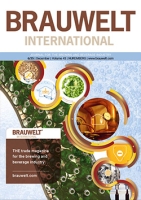In order to assure sufficient high-quality harvests, use of some pesticides is required in agriculture. Quantities and times of application are subject to strict legal stipulations, with the objective of having as little residues as possible on harvested goods and on food prepared with same. Maximum quantities are set out clearly. Hops have been monitored especially carefully for residues of plant protectants for a long time. Hopsteiner has developed a systematic residue analysis for testing hop plants. The results of the last campaign are presented below.
Blend-hopping mainly depends on the experience of each brewer, and flavour hops introduce very characteristic ‘varietal aromas’ to finished beers. However, brewers are less familiar with using such hops. Craft brewers are trying to blend new flavour hop varieties by trial and error. In recent years, the key flavour compounds and their contribution to varietal aromas of certain hop varieties have gradually emerged to light. In this report, blend-hopping methods based on scientific evidence are discussed. The following article summarises parts of research results which have already been published in BrewingScience (Vol. 69, 11-12, 2016, pp. 85-93).
Why have euphonious variety names such as e.g. Mandarina Bavaria or Spalter Select been reserved for hops to-date? Shouldn’t the various yeast strains deserve having attractive names? A research team at the Research Centre Weihenstephan for Brewing and Food Quality (BLQ), TU München, took up this issue.
The sensory impression of a beverage is influenced by many factors. When consuming a beverage, whether in a restaurant or at home, the recipe is not the only crucial factor; the shape of the glass is just as important. This is the result of a recent study undertaken by Döhler Sensory & Consumer Science. Brand suppliers in particular should provide glasses that present the beverage with the desired sensory profile.
EBC Congress premiere in Slovenia: For the first time ever in its 70 years of existence, the Congress of the European Brewery Convention was held in Slovenia. The picturesque city of Ljubljana was a worthy host for approximately 480 brewers in attendance from Europe and around the world, including many first-time EBC visitors, who came to learn about the latest findings in brewing research on May 14th-18th 2017.
The 78th annual meeting of the American Society of Brewing Chemists (ASBC) took place this year in Fort Myers, Florida/USA from June 3rd to 7th. 349 participants from twelve countries were presented with a wide spectrum of scientific and practice-oriented research in nine technical sessions Omics, Hops I and II, Analytics of aromas, Yeast, Sensorics, Stability, Quality assurance and Microbiology.
The commercial value of hops and hop products is particularly influenced by the content of alpha-acids. the main source of the beer’s bitter taste. In 2015 the additional contribution of hard resins was clearly demonstrated (1). It was shown that at least 20% of the hop derived beer bitter intensity was attributed to hard resins and about 75% to iso-alpha-acids. The whole range of hard resin components is transferred into ethanol extract, therefore only this type of extract can be called “Total Resin Extract” (TRE). Read the complete article here!
Just when you thought craft brewers couldn’t add any more hops to their beer they do. Some craft brewers feel that dry hopping with 1 to 2 lbs of hops per barrel of beer is not enough and many are adding as much as 4 to 5 lbs if not more. To see what effect this has on the hop acid composition of beer and bitterness, a series of dry hopping experiments were conducted using Cascade hop pellets with assaying 5.7% alpha acids, 5.5% beta acids and 0.23% humulinones. A control beer with assaying 42 ppm iso-alpha acids was dry hopped with 1.0 lbs, 2.0 lbs, 3 lbs, 4 lbs, and 6 lbs of Cascade hop pellets for three days at 16 °C. As the below chart shows, most of the iso-alpha acids are lost with the first two pounds of hops with smaller amounts being lost with pounds 3 thru 6. Due to the high solubility of humulinones, concentrations reach 48 ppm and alpha acid concentrations reached just over 35 ppm with 6 pounds of dry hopping.
The survey of hop acreage in 2017 is completed.
Hopsteiner has recently expanded a new experimental variety from their breeding program in Yakima, Washington/USA. Seventy-five percent Cascade in origin, Experimental #09326 was bred in 2008 and is an aroma-type hop that matures mid-to-late season. Its bright, punchy aro-ma has been described as grapefruit and tropical fruit, but brew trials indicate this variety also adds a distinct berry note in ales, making it an exciting hop to watch! Experimental #09326 trials are still un-derway, so stay tuned for updates on this variety.
As an offshoot of the current sustained wave of craft beer, a trend among breweries towards offering an increasingly regionally-oriented palette of products has emerged in recent years – this also includes raw materials like malt. Demand is rising for beer made from malt produced in close proximity to breweries, and thus the craft beer wave, which has engulfed the beer market, is being followed closely by another: the craft malting wave.


